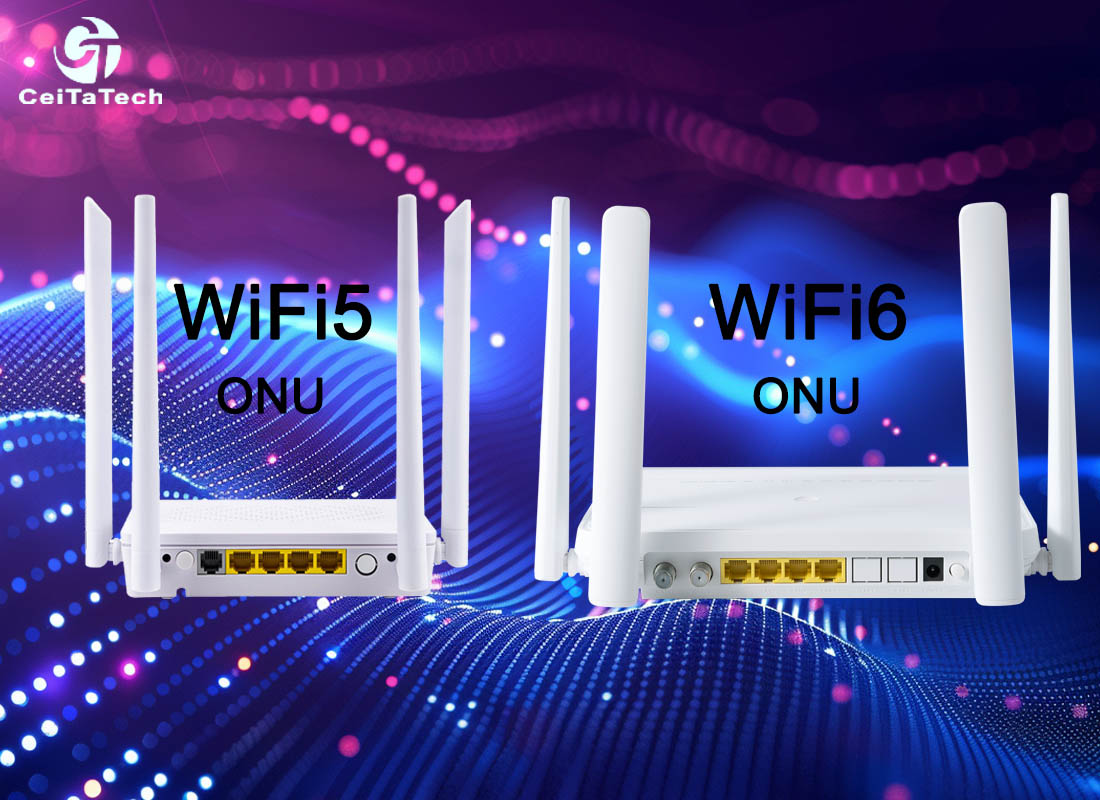WIFI5, or IEEE 802.11ac, is the fifth generation wireless LAN technology. It was proposed in 2013 and has been widely used in the following years. WIFI6, also known as IEEE 802.11ax (also known as Efficient WLAN), is the sixth-generation wireless LAN standard launched by the WIFI Alliance in 2019. Compared with WIFI5, WIFI6 has undergone many technological innovations and upgrades.

2. Performance improvement
2.1 Higher maximum data transmission rate: WIFI6 uses more advanced coding technology (such as 1024-QAM) and wider channels (up to 160MHz), making its maximum theoretical transmission rate much higher than WIFI5, reaching 9.6Gbps above.
2.2 Lower latency: WIFI6 significantly reduces network latency by introducing technologies such as TWT (Target Wake Time) and OFDMA (Orthogonal Frequency Division Multiple Access), making it more suitable for real-time communication applications.
3.3Higher concurrency performance: WIFI6 supports more devices to access and communicate at the same time. Through MU-MIMO (Multi-User Multiple Input Multiple Output) technology, data can be transmitted to multiple devices at the same time, improving the overall throughput of the network. .
3. Equipment compatibility
WIFI6 devices do a good job in backward compatibility and can support WIFI5 and earlier devices. However, it should be noted that WIFI5 devices cannot enjoy the performance improvements and new features brought by WIFI6.
4. Security enhancement
WIFI6 has enhanced security, introduced the WPA3 encryption protocol, and provided stronger password protection and authentication mechanisms. In addition, WIFI6 also supports encrypted management frames, further improving network security.
5. Intelligent features
WIFI6 introduces more intelligent features, such as BSS Coloring (Basic Service Set Coloring) technology, which can effectively reduce interference between wireless signals and improve network stability. At the same time, WIFI6 also supports more intelligent power management strategies, such as Target Wake Time (TWT), which can reduce the power consumption of the device.
6. Power consumption optimization
WIFI6 has also made improvements in power consumption optimization. By introducing more efficient modulation and coding technologies (such as 1024-QAM) and smarter power management strategies (such as TWT), WIFI6 devices can better control power consumption and extend the battery life of the device while maintaining high performance.
Summary: Compared with WIFI5, WIFI6 has significant improvements in many aspects, including higher data transmission rate, lower latency, higher concurrency performance, stronger security, more intelligent features and more Good power optimization. These improvements make WIFI6 more suitable for modern wireless LAN environments, especially in high-density and high-concurrency application scenarios.
Post time: Jun-26-2024








